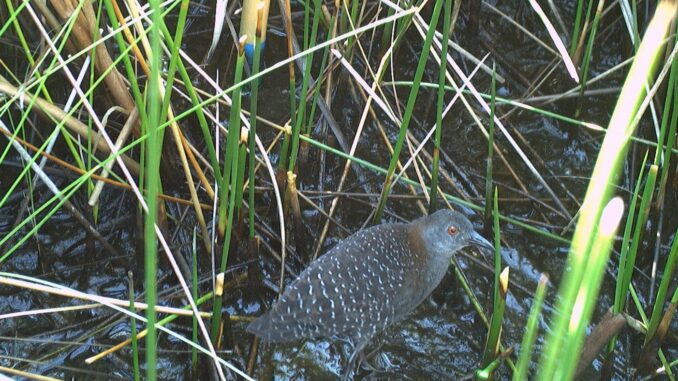
While King and Clapper Rail are sometimes called “marsh quail,” their smaller cousins are not as well known, and apparently disappearing.
Eastern Black Rail are elusive and hard to find. Sometimes referred to as a “feathered mouse” due to their movement and behavior, these secretive little, marsh-loving birds were once widespread in North Carolina. Now they are at risk of extinction. The N.C. Wildlife Resources Commission (WRC) is seeking public review of a management plan developed to save this very important species from disappearing.
Habitat loss due to sea level rise, extreme weather events and land development is taking its toll on the Eastern black rail. It nests on the ground in the highest elevations of brackish and salt marsh on the Coastal Plain, and wet fields in inland areas. It requires wet marshes with thick grassy cover and water less than an inch deep for foraging and nesting because their young are small and cannot swim far. It is thought that nests and young are being flooded more often and inland freshwater marshes have all but disappeared.
Biologists estimate that this species may disappear from North Carolina within the next 35 years if significant actions are not taken. Farmers can help by refraining from mowing wet areas of hay and other fields from April through September.
The Wildlife Commission is improving habitat management in coastal and inland marshes, working to permanently protect coastal marshes, and providing guidance and assistance to private landowners with potential habitat. The agency has been using new technology in efforts to learn more about the species to better protect it, including autonomous recording units to detect Black Rails’ calls.
The Black Rail Management Plan is available for public review and comment through July 11, 2025.





















